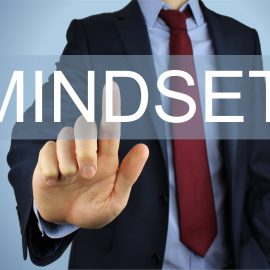

This article is an excerpt from the Shortform book guide to "Exploring the World of Lucid Dreaming" by Stephen LaBerge and Howard Rheingold. Shortform has the world's best summaries and analyses of books you should be reading.
Like this article? Sign up for a free trial here.
How does lucid dreaming work? Can you learn and train while you sleep? What happens if you become lucid during a nightmare?
In Exploring the World of Lucid Dreaming, Stephen LaBerge and Howard Rheingold investigate the transformative power of lucid dreaming. They write that through lucid dreaming, the ordinary boundaries of reality dissolve.
Here’s an overview of the book, with actionable steps you can take.
Overview of Exploring the World of Lucid Dreaming
In Exploring the World of Lucid Dreaming, Dr. Stephen LaBerge and Howard Rheingold show you how to purposefully “wake up” in your dreams—while still remaining asleep—and explain how such “lucid dreaming” can change your life. They argue that lucid dreaming can be a powerful tool for positive transformation and explore many gifts that lucid dreams can offer you, including the opportunity to indulge your fantasies, increase your mental flexibility, learn new skills and improve performance, overcome fears, solve problems creatively, and connect to your spirituality.
Stephen LaBerge is a psychophysiologist, lucid dream researcher, and the founder of the Lucidity Institute, an organization dedicated to the study and practice of lucid dreaming. He based his findings in this book on his laboratory work at Stanford University, where he mapped the relationship between the mind and body as a person dreams. Howard Rheingold is a writer and teacher specializing in the power of the mind, modern communications, and the intersection between them. He helped to found several online magazines and has written numerous books about digital communications and the connection between technology and the human brain.
What Are Lucid Dreams?
LaBerge and Rheingold explain that when we dream, we usually watch or participate in the experience without realizing we’re dreaming. Because we don’t know we’re in a dream, it unfolds much like we experience waking life—things happen around us and we respond to them.
In a lucid dream, however, you realize you’re dreaming, and you can consciously influence the dream and change any aspect of it. This can open up a universe of experiences: Instead of being limited by the real world, in a lucid dream you’re limited only by your imagination.
Some people have lucid dreams without intending to, but the authors explain that lucid dreaming is also something you can train yourself to do. They argue that it’s easy—you only need to learn how to recognize that you’re in a dream. They caution, however, that although it’s generally safe and enjoyable for many, lucid dreaming may not be safe for everyone, especially people who struggle to distinguish between their waking reality and their imagination. If you find it overwhelming or distressing as you explore lucid dreaming techniques, lucid dreaming may not be right for you.
Prepare for Lucid Dreaming
LaBerge and Rheingold write that to develop the skill of lucid dreaming, you’ll first need to know some basic information about sleep. Then, you’ll work to develop your dream recall. When you can remember your dreams, you’ll familiarize yourself with them and identify patterns within them. The authors call these patterns dream signs (we’ll call them dream clues). Dream clues help you recognize when you’re dreaming—and this recognition is one of the keys to achieving lucidity.
How Does Sleep Work?
The authors explain that during sleep, your brain and body go through two main phases: a restful state where your mind, breathing, and metabolic rate slow down as the body repairs itself, and an active state called Rapid Eye Movement (REM) sleep. In REM, your eyes move rapidly, your breathing is irregular, and your brain activity is similar to when you’re awake.
Both non-lucid and lucid dreams occur during REM sleep. Because your brain activity is similar during REM dream states and waking life, you experience similar physiological and psychological changes. For example, if you’re stressed or frightened in a dream, your heart will pound in real life.
How to Lucid Dream
There are many ways you can become lucid while dreaming. No matter which technique you experiment with, the authors recommend you stay connected to your enthusiasm and that you cultivate an optimistic mindset, as motivation and a positive attitude are key to success. Learning to lucid dream can take time and effort—experiment with the following techniques from the authors, and don’t give up.
Optimize Your Sleep
Recall that lucid dreams, like all dreams, happen during REM cycles. The first thing you can do to set yourself up for successful lucid dream exploration is to optimize your sleep schedule so you go through more REM cycles each night. The authors explain that you have more REM cycles in the second half of the night than in the first—lucid dreams often occur right before people wake up in the morning. Therefore, the later you sleep in, the greater the chance you’ll have a lucid dream.
If you can, sleep later to give yourself more time in REM sleep. However, if your schedule doesn’t allow for sleeping in, you can wake yourself up early, stay awake for an hour or more, and then go back to sleep to catch up on your missed sleep. You’ll have more REM sleep during the second period and a higher likelihood of lucid dreaming.
Set Your Intention
You can have lucid dreams simply by setting an intention before you fall asleep to recognize your dream clues and, therefore, the dream state. The authors recommend you follow these steps to set your intention successfully:
- As you’re preparing to fall asleep in bed, confidently decide to recognize the dream state that night.
- Select a few dream clues and, with your eyes closed, visualize yourself having a dream. Imagine seeing those dream clues and realizing that you’re dreaming. The authors recommend that you imagine seeing action dream clues, like flying or falling, for example, because they’re the most potent clues.
- If it doesn’t work after a few nights, move on to other techniques.
Reality-Check
One way to realize that you’re dreaming is to ask yourself whether you’re dreaming or awake during a dream. When you ask this question and can answer it correctly, you’ll become lucid. We’ll call this method reality-checking.
To get yourself to reality-check in dreams, you must habitually ask yourself the same question while you’re awake. The authors say the patterns of our daytime thoughts, behaviors, and responses carry over into our dreams. Therefore, if you’re in the habit of reality-checking while awake, you’ll likely begin to ask yourself the same question while dreaming.
To reality-check successfully, follow these recommendations from the authors:
- Ask yourself, “Am I dreaming or awake?” five to ten times a day. Don’t just automatically answer with, “Of course, I’m awake.” Instead, really try to determine what the answer is based on the evidence around you. If you answer automatically that you’re awake, you’ll likely answer the same way in dreams.
- Reality-check during times in your day that seem dreamlike—moments or events that feel surprising, unlikely, or strange, or when you’re having strong emotions. These types of things happen all the time in dreams, so if you’re in the habit of reality-checking when they happen while awake, you’ll increase the likelihood that they trigger reality-checking in dreams.
Fall Asleep Consciously
Another lucid dream method is to fall asleep without losing your lucidity from being awake. This way, you can transition directly into lucid dreaming instead of trying to become conscious after a dream has begun. Typically, we are not aware of the exact moment when we fall asleep, and we stay unaware that we’re sleeping until we wake up. The authors describe this method as feeling like you’re falling asleep without losing awareness of yourself.
Falling asleep consciously doesn’t work well at the beginning of the night because you must cycle through several stages of non-REM sleep before falling into REM. Therefore, these methods work best if you awake late at night or in the early hours of the morning and then go back to sleep.
Practice the following techniques to fall asleep consciously and slip directly into lucid dreaming.
Technique #1: Pay attention to images
- Relax completely by breathing slowly, progressively loosening up each part of your body, and letting your concerns fade away.
- With your eyes closed, focus on the images that appear in your mind’s eye—what science calls hypnagogic imagery. Often, these are shifting colors and images and flashes of light. Watch them calmly, without trying to control them.
- Observe as these images get more vivid and form into a dream. Attempt to stay aware of the images and yourself, and let yourself be drawn passively into the dream, fully lucid.
Technique #2: Count yourself into a dream
- Relax completely, as described in step 1 of technique #1.
- Count to yourself, saying, “One, I am dreaming…Two, I am dreaming,” and so on.
- Eventually, you’ll find that you are saying, “I am dreaming” inside a dream and consequently become lucid.
How Lucid Dreaming Can Change Your Life
Now that you know how to have lucid dreams, how can you make the most of them? In waking life, we’re used to having many restrictions, but in lucid dreams, there are no limitations on who we are, where we go, or what we do. Even the laws of physics can be broken. Many people describe their lucid dreams as vivid and exhilarating experiences that bring significant joy and pleasure. Lucid dreams can offer you limitless wish fulfillment—you can travel anywhere, eat anything, and become anyone.
While the authors write that pleasure, fun, and play are valuable for mental and physical health, they argue that the true value of lucid dreaming is the opportunity it can provide for growth and learning. They say that lucid dreaming can help you cultivate mental flexibility, learn new skills, face and overcome your fears, solve difficult problems, and connect to your spirituality.
Develop Mental Flexibility
The authors define mental flexibility as your ability to adopt new and different perspectives and to adapt your beliefs and behavior to challenges and changes in your life. They explain that lucid dreams can help you cultivate mental flexibility because they provide you with limitless space to safely and creatively explore, experiment, and play with new ways of thinking and behaving.
Lucid dreams can also expand your perspective of what’s possible for your life and future. The first step in creating the life you want to live is imagining it and believing it’s possible. Lucid dreaming provides a vivid stage for you to envision, enact, and really feel what it would be like to be the person you want to be and have the life you wish for yourself.
Gain Control Over Your State of Mind
The authors explain that lucid dreams also give you an opportunity to improve your relationship with your sense of control. Most of us try to control the world outside of us—for example, we try to control other people’s behavior. However, most things outside us are outside of our control, and it would be healthier and more productive to focus on what we can control—our inner experiences and our responses to the world.
Lucid dreaming can help you focus on controlling internal, rather than external, aspects of your world by providing experiences in which you can, without limitations, safely explore your relationship with control. The authors explain that you can experiment with controlling your lucid dream experience in two ways:
- You can influence the details and circumstances of your dream by manipulating any aspect of it with your will.
- You can control your responses to dream scenarios.
The authors recommend focusing on controlling your responses to dream scenarios—slowing down and making intentional decisions about how to respond rather than reacting unconsciously and habitually. If you practice changing your habitual internal reactions in a lucid dream—for example, if you start facing your fears instead of running from them—then the experience becomes a rehearsal for changing your behavior and your beliefs in your waking life.
Learn New Skills and Improve Performance
Lucid dreams can be a practice arena for improving your skills and performance in many areas, including athletic training, work performance, exam-taking, and creative pursuits like playing music and dancing. The authors explain that science has already shown that using mental imagery in waking life can improve skills and performance. Therefore, they argue lucid dreaming has the potential to be an even more effective way to improve your skills because the mental images in lucid dreams are much more vivid than your waking imagination.
Mental imagery improves skills and performance because the neurons in your brain that fire when you’re actually practicing something are the same ones that fire when you imagine practicing. When the same neurons fire together repeatedly, the connections between them strengthen over time. This attachment creates an efficient neural pathway that requires less conscious effort to use. Strong, efficient neural pathways lead to expanded and improved skills and better performance.
The more your mental imagery practice feels like the real thing, the more it’ll improve your skills and performance. The authors argue that this is why lucid dreams are the most powerful form of mental imagery practice: They’re totally immersive and engage all our senses, unlike the weak mental images we can create while awake. Additionally, because of the limitless possibilities of lucid dreams, we can push the boundaries of our abilities when we practice inside them.
Overcome Your Fears
Lucid dreaming can help you face and overcome fears. Because no actual harm can come to you in a dream, lucid dreams give you a valuable opportunity to safely confront challenging and frightening situations rather than avoid them. When you face your fears in a safe environment like a dream, you learn to recognize when fear is unfounded, build confidence, tap into your strengths and resilience, and eliminate the fears altogether. To do this, right before you fall asleep, decide to dream about what you’re afraid of. The object of your fear will then manifest itself for you to confront.
But what if the dream you’re in is already a nightmare? The authors say that when you become lucid in a nightmare, you can transform it into a meaningful and valuable experience. A lucid nightmare gives you an opportunity to face what you fear most. You can choose to wake up from nightmares, but escaping from them will leave you with unresolved internal conflicts that will likely revisit you in your sleep soon. It’s better to stay in the dream and face the fear.
Nightmares often feature a frightening figure—a person, animal, or entity that’s threatening in some way. The authors say you can confront a hostile dream figure in several ways: You can fight it, change it into something non-threatening, or face it and calmly interact with it. Of these choices, the authors recommend the third option in most cases. This is because when you turn to face a frightening figure with an attitude of peace and reconciliation, the figure may offer you valuable insights and naturally transform into something friendly.
When you turn to face a hostile figure, the authors recommend you begin a dialogue with it. Speaking with these nightmare figures can transform and pacify them as well as provide you with valuable insights. The authors suggest asking questions such as: “Who are you?”, “Why are you here?”, and “What do you have to tell me?”
However, the authors write that if a hostile dream figure is someone you’ve been harmed by in real life, the best and most empowering approach may be to fight, destroy, or overpower the figure rather than opening yourself up to a dialogue with them.
Solve Problems and Make Decisions
In lucid dreams, you can work through problems by experimenting without limitations, which can help you come up with creative solutions and better decisions. Even non-lucid dreams are powerful problem-solving playgrounds for our minds: Throughout history, engineers, physicists, mathematicians, writers, and artists of all varieties have been making important creative and intellectual breakthroughs in their dreams. Lucid dreams tap into the problem-solving potential of dreams and amplify this potential by giving you the agency to decide what to focus on.
Another reason lucid dreaming can produce breakthrough creative solutions is because you have greater access to your subconscious mind while you dream, which, the authors explain, stores a lot more information and wisdom than we realize. Lucid dreams provide greater access to that information and wisdom because the conscious mind is less active during sleep.
You can make more informed decisions in lucid dreams by acting out the different paths or scenarios that you’re faced with in waking life. By experiencing the consequences of each decision as they could happen in waking life, you’ll be more prepared to choose what is best for you and those around you.
Better Understand Your Identity
The authors explain that lucid dreams can help you understand yourself better and develop a healthy relationship with your ego. Your ego, according to the authors, is a part of who you are, but it isn’t all of who you are—it represents aspects of your true nature, much like a written song score represents music but it isn’t the music itself. The authors write that it’s easy for us to mistake our egos for our true selves and to identify with them. But to have a healthy relationship with your ego, you must stop identifying with it.
Lucid dreams can help you see your ego for what it is and understand that your true self encompasses more than your ego. The authors explain that when you’re in a lucid dream, you can plainly see that your dream self is not your real self—it’s simply a representation of you that your mind has created in the dream state. Your ego is the same thing in your waking state. When you understand that your ego is just a mental representation, you can more easily work with it, instead of struggling against it, and you’re on your way to better understanding the entirety of who you are.
Explore Your Spirituality
According to LaBerge’s research, many people who have lucid dreams report having powerful spiritual experiences that change their understanding of themselves and reality. They visit other dimensions, commune with angels, or encounter God. Lucid dreaming can, therefore, offer a glimpse of magic and a sense of a much larger, mysterious reality beyond your everyday experiences.
Lucid dreams give you a degree of control that isn’t possible in waking life, but according to the authors, they can also lead you to profound spiritual experiences by allowing you to surrender that control completely. To do this, you let go of any agenda you may have and forfeit all control to something bigger than yourself. This can be any concept that appeals to you and doesn’t need to be tied to any one religion’s ideas about God—for example, your higher self, the collective unconscious, or the universe itself.
To experience what surrender can offer you, the authors recommend doing the following: When you find yourself in a challenging, confusing, or overwhelming lucid dream scenario, stop any actions and open yourself up to whatever spiritual experience is meant for you in that moment. According to the authors, many people report that their dreams suddenly transform and they have transcendent experiences such as feeling at one with the universe, sensing their sense of self expand, and encountering mystical realities such as heaven, Nirvana, and the Void.
The authors explain that you can also take a more directive approach when seeking spiritual experiences in lucid dreams. They suggest you reflect on what your ultimate spiritual goal is and choose a phrase to repeat in your lucid dreams which represents your aspiration. For example, you could say, “I am seeking God,” “I want to understand my true self,” or “What is my purpose in life?” Once you’re in a lucid dream and repeating your chosen phrase, the authors recommend you open yourself up to whatever experiences unfold and try to not predict or control the outcome.
Exercise: Prepare for Lucid Dreaming
According to LaBerge and Rheingold, learning to lucid dream requires motivation and commitment. You also need to develop good dream recall so you get to know your dreams and dream signs. The following exercise will help you clarify your lucid dreaming goals and take the first steps on your lucid dreaming journey.
Reflect on your reasons for wanting to learn to lucid dream. What about learning to lucid dream are you most excited about? How do you personally imagine lucid dreaming might improve your life?
Reflect on any concerns you might have about lucid dreaming. Is there anything that worries or scares you? Are you concerned you might not be able to learn to do it? Make a list of your concerns and then brainstorm positive ways to address them so they don’t interfere with your motivation and commitment to learning.
Now, set your intention for lucid dreaming. What specific goals or intentions do you have for exploring lucid dreaming? How do you plan to incorporate lucid dreaming into your life?
Reflect on your dream recall skills. Are you able to remember any of your dreams? If so, how often do you remember them? Remember, no matter how well you can remember your dreams now, the authors assure that you can improve your recall by starting a daily dream journal.
If you frequently recall your dreams already, what are your dreams typically like? Describe in detail a recent dream you can remember. What elements of this dream could indicate that you were dreaming?

———End of Preview———
Like what you just read? Read the rest of the world's best book summary and analysis of Stephen LaBerge and Howard Rheingold's "Exploring the World of Lucid Dreaming" at Shortform.
Here's what you'll find in our full Exploring the World of Lucid Dreaming summary:
- Ways to prepare for lucid dreaming
- How to purposefully “wake up” in your dreams
- The many ways lucid dreaming can improve your waking life






